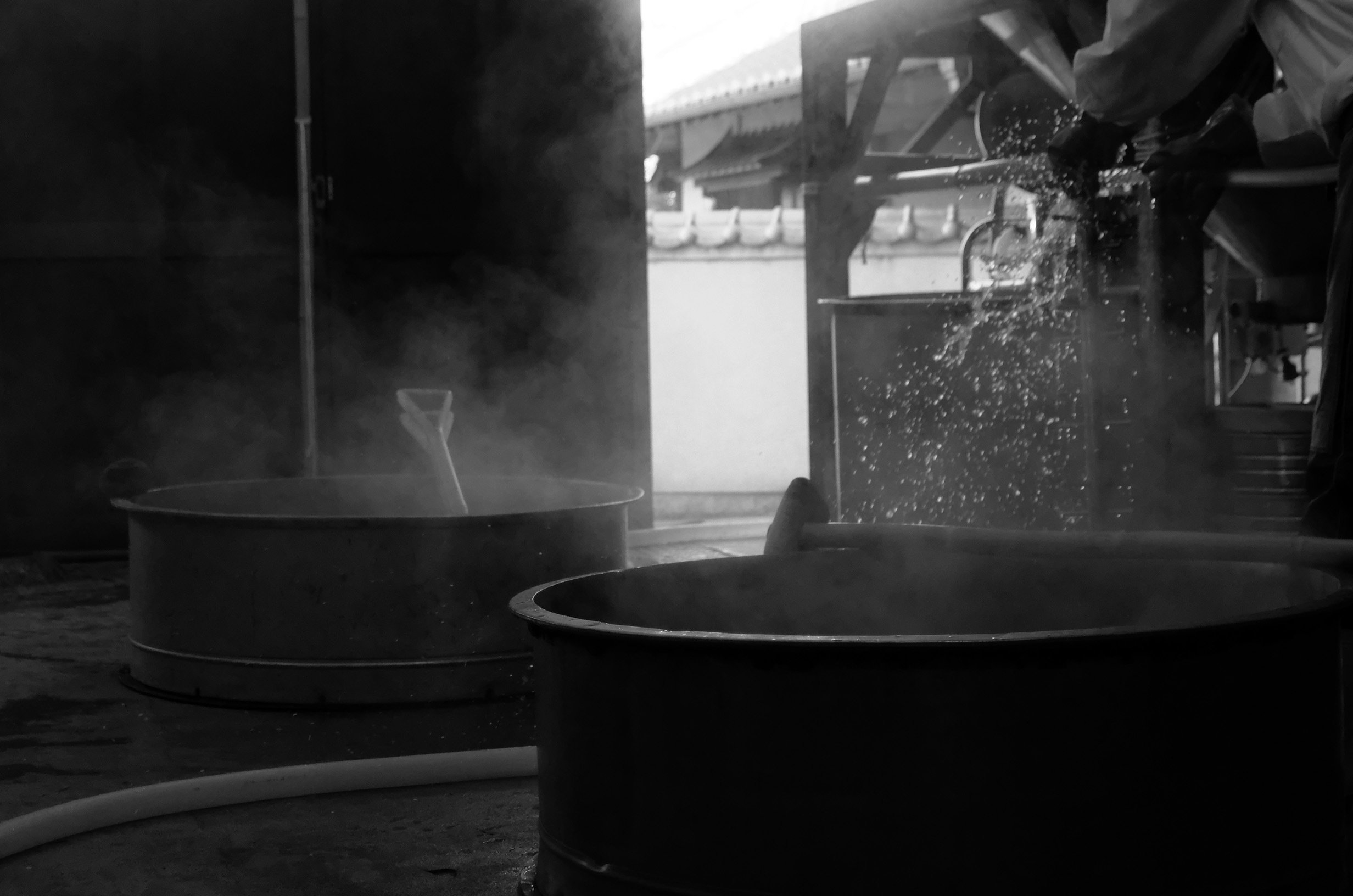A flavour beloved by locals and travelers for over 250 years
The Kumaya Sake Brewery’s history dates back to the middle of the Edo Period.
The Ihoriya family, originally from the Kishu-Kumano region, and moved to the modern-day Kurashiki as labourers for the construction for a new branch of the Kishu-Kumano Shrine.
The area to which they moved – and where the brewery stands today -was flourishing, with the roads to the Kumano Shrine and to Kagawa-ken’s Konpira Shrine, both regularly frequented by travelers making pilgrimages, passing behind the brewery.
It was here in 1716 that Ishichi Ihoriya, taking the word “Kuma” from the Kumano Shrine, established the Kumaya Sake Brewery.
The brewery’s goal is to make sake that people will never tire of drinking, where the umami of the rice expands on the palate, with a long finish that lingers and fades gently like an ebbing tide.
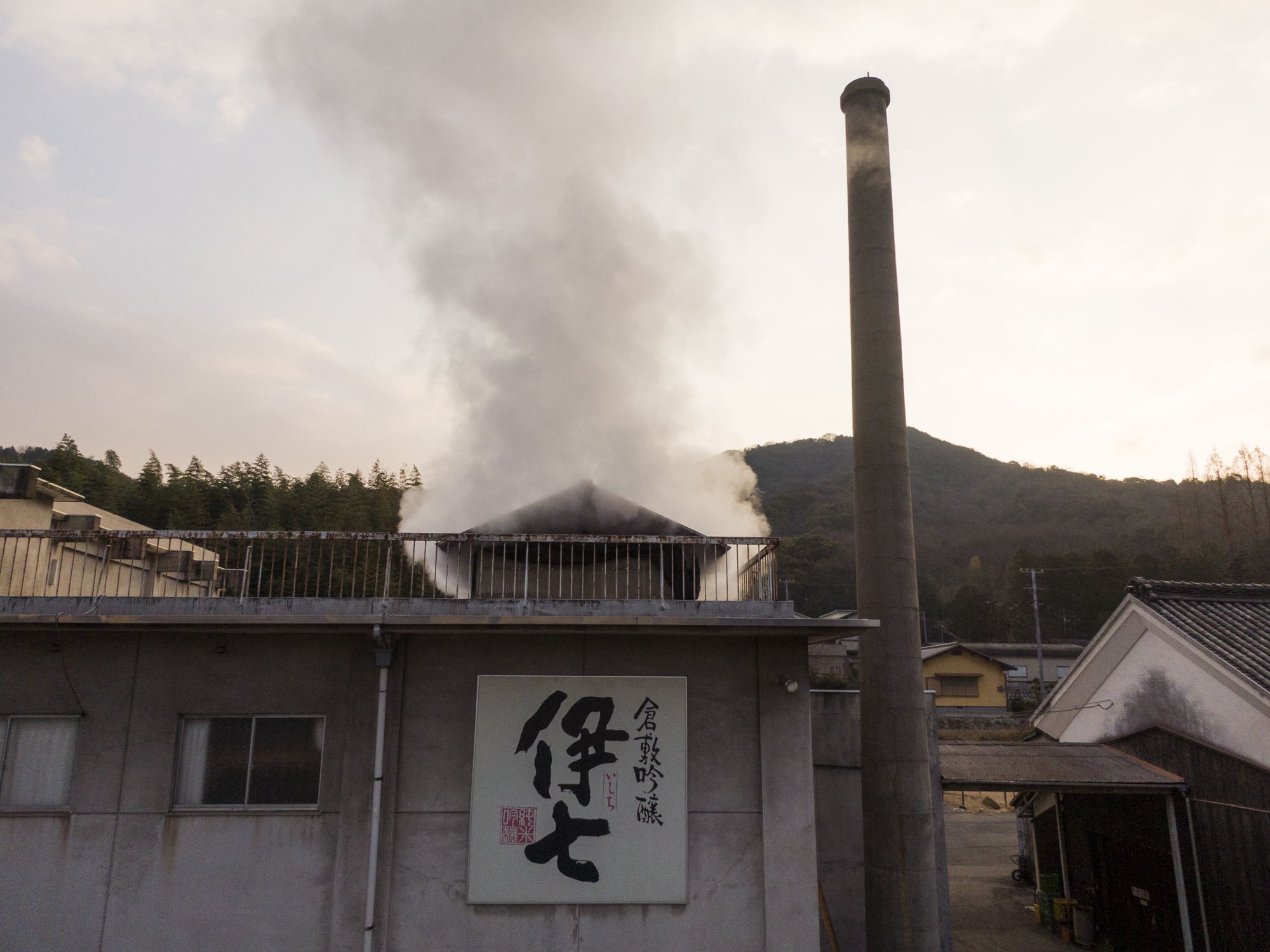
Terroir perfect for Omachi rice
Among the “big four” sake rices, Yamada Nishiki, Omachi, Gohyaku Mangoku and Miyama Nishiki, Omachi is a late harvest rice, planted in the middle of June and harvested at the start of November. It grows tall and its stems are susceptible to lodging (which leads to increasing risk of the rice rotting from soaking in the water or from higher humidity levels), as well as to pests – as such it rightly has a reputation for being challenging to grow.
However, in Okayama Prefecture – sometimes nicknamed “Okayama, the Land of Sunshine” – the rice plants receive an average of over 2,000 hours of sunshine, comparatively long, and the prefecture has relatively low rainfall levels at 1,100mm per year, making it one of Japan’s foremost rice-growing regions and perfect for cultivating Omachi.
If Yamada Nishiki is like an honour student, then Omachi is the wild child. Once the hurdles of cultivation are overcome, the rice can be used to brew a unique and complex sake.
Dedicated fans of Omachi, lovingly nicknamed “Omachistas”, are on the rise and the variety is at the top of many sake lovers’ lists.
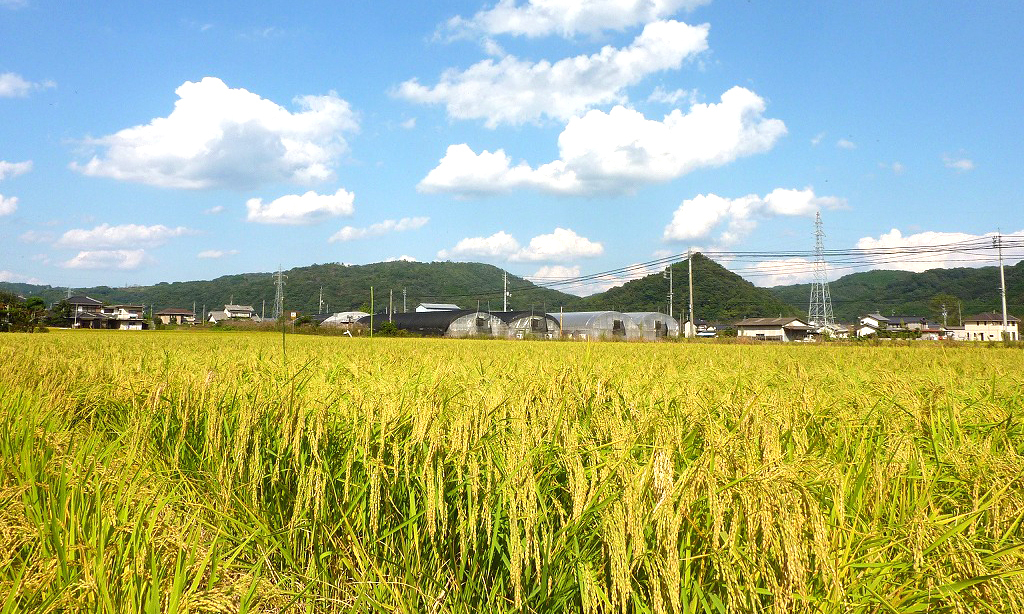
Contracted rice farming near to the old Akaiwa district
Omachi rice has a large grain size as well as having a large shinpaku (the center of the rice). As a result, there was a period when it was widely grown across the country during the Taisho Era, but its height made it difficult to grow and production levels gradually declined.
Currently, 90% of Omachi production is from Okayama Prefecture, which continues to sing the variety’s praises.
Sake made from Omachi is known for showing its best after a period of ageing.
The An Junmai Daiginjo and Junmai Ginjo both use high quality rice grown by contracted farmers on cultivated land next to the old Akaiwa district.
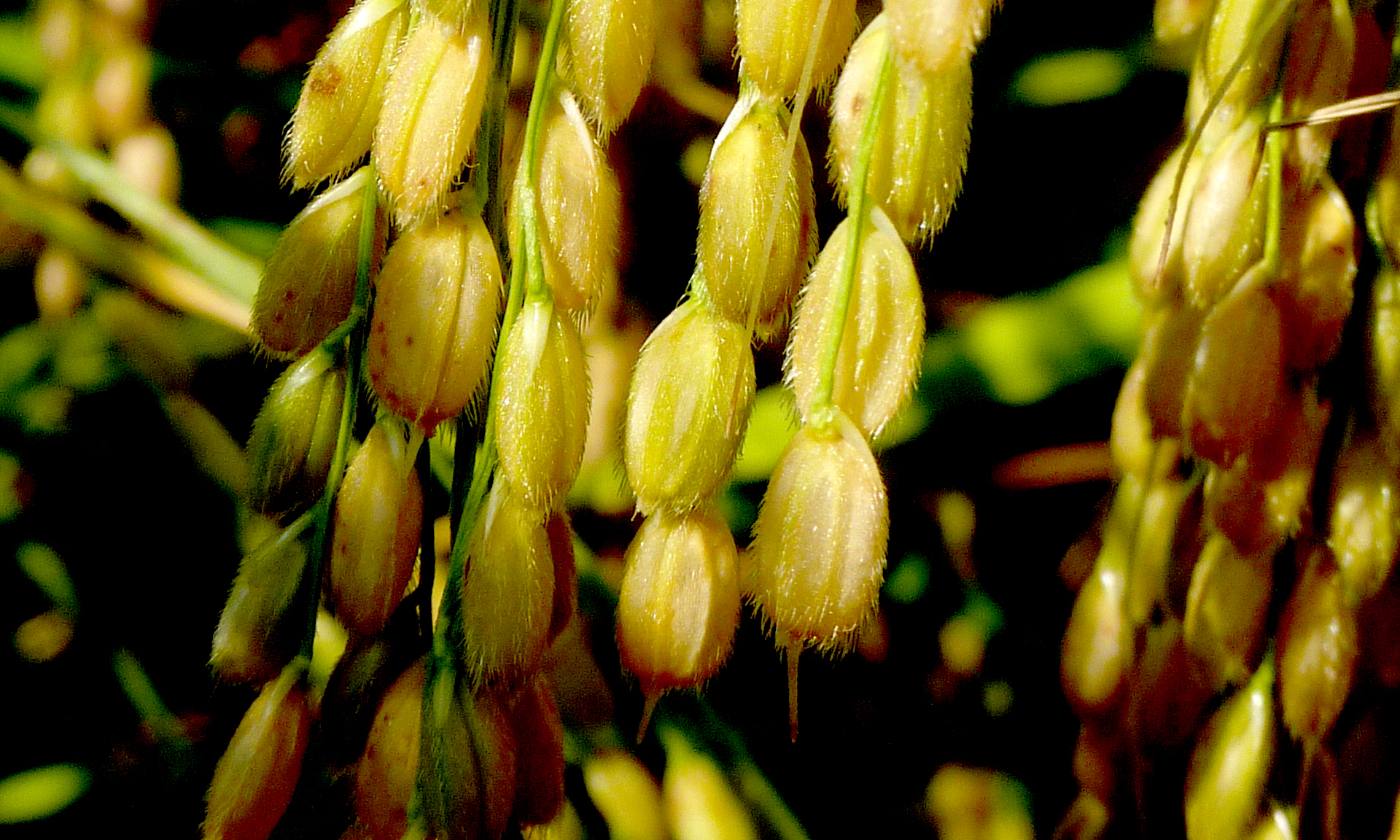
Drawing out Omachi rice’s maximum potential
The Kumaya Sake Brewery was founded in 1716. Over the three hundred years since its founding, it has built a reputation for reliability and high quality in the local area and is one of the few breweries fortunate to have a contract with Omachi growers in the area of Bizen, providing it with a stable supply of rice.
Current yearly production volumes are at around 420 koku (118,000 litres). Most of their efforts are directed at the production of Junmai sake categories.
An is a range of sake developed as a collaboration between the Kumaya Brewery and Mottox to show the merits of Okayama’s terroir.
To draw out the Omachi rice’s maximum potential, after pasteurization the wine is stored and aged at the brewery at temperatures below 5℃.
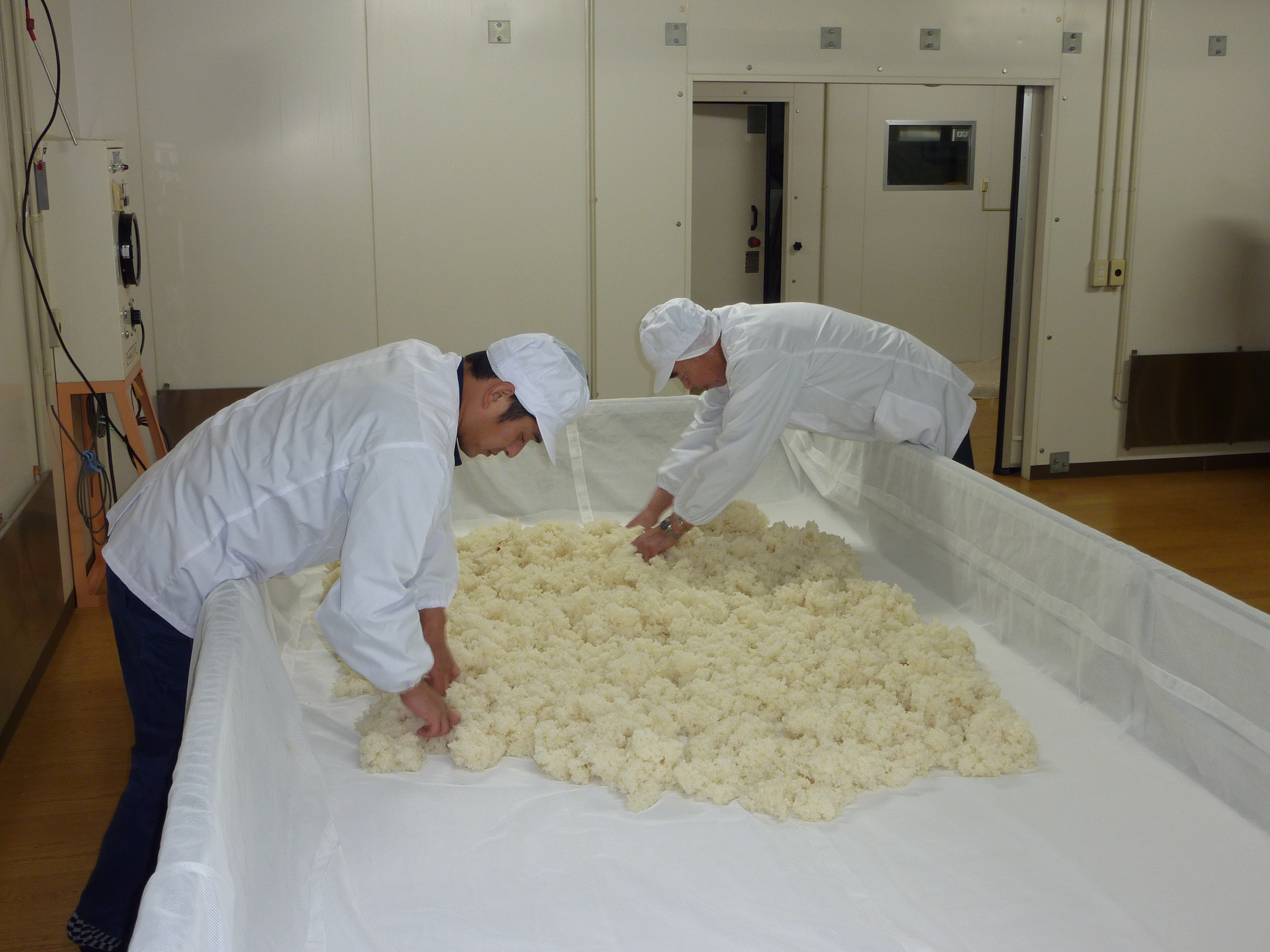
Using water drawn from two differing wells
The brewery stands between Kumano Shrine to the north and Goryusonryuin Temple to the south, watched over by two spiritual sites with long histories.
The Kumaya Sake Brewery uses water that originates from springs on the mountain behind the Kumano Shrine, claimed to have miracle-working properties.
There are two large wells on the brewery grounds, drawing from underground water 50 to 60 meters underground. Due to the differences in each waterway, one source is soft water, while the other is relatively hard. The harder water (rated at a hardness of 4.5) is used when making the yeast starter, heightening the health and vigour of the fermentation, whereas the softer water (hardness 2.6) is used for making the mash.
